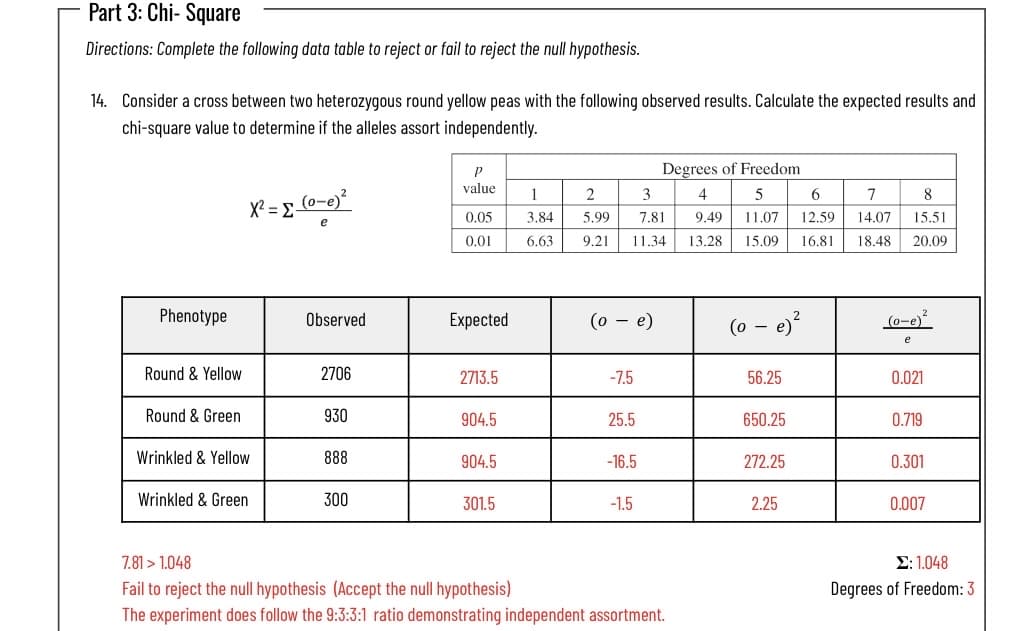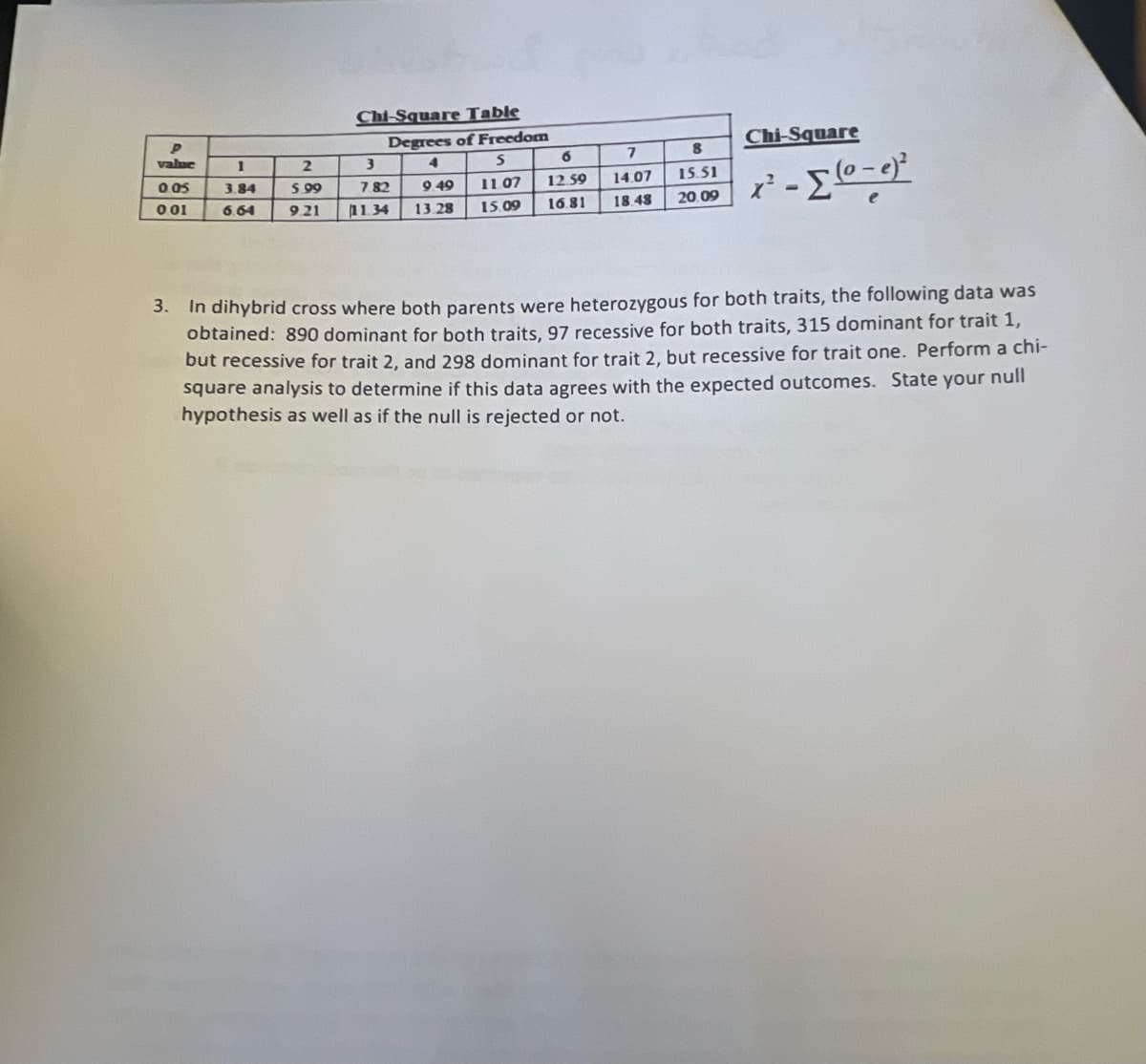a chi square tablet for the question. I left a reference down below. Question: 3. In dihybrid cross where both parents were heterozygous for both traits, the following data was obtained: 890 dominant for both traits, 97 recessive for both traits, 315 dominant for trait 1, but recessive for trait 2, and 298 dominant for trait 2, but recessive for trait one. Perform a chi-square analysis to determine if this data agrees with the expected outcomes. State your null hypothesis as well as if the null is rejected or not.
Genetic Variation
Genetic variation refers to the variation in the genome sequences between individual organisms of a species. Individual differences or population differences can both be referred to as genetic variations. It is primarily caused by mutation, but other factors such as genetic drift and sexual reproduction also play a major role.
Quantitative Genetics
Quantitative genetics is the part of genetics that deals with the continuous trait, where the expression of various genes influences the phenotypes. Thus genes are expressed together to produce a trait with continuous variability. This is unlike the classical traits or qualitative traits, where each trait is controlled by the expression of a single or very few genes to produce a discontinuous variation.


Step by step
Solved in 4 steps









